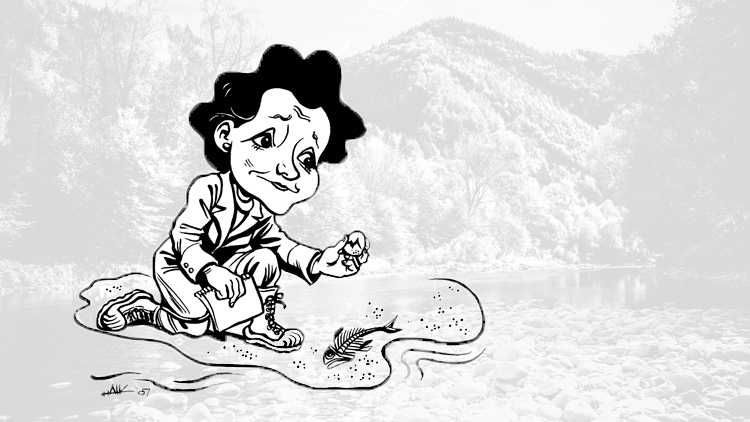Portrayed by Caroline McIntyre
Step inside the revolutionary book, Silent Spring as its author Rachel Carson reveals the reckless destruction of our living world. Written more than 55 years ago Silent Spring inspired the Environmental Movement and has never been out of print. And now you have a chance to ask the author, Rachel Carson, how this came to be. But these aren’t just performances. They’re a chance to step into Living History – to ask questions and go one on one with the shy but fearless woman whose books shaped our country and our world. Bring your stories. Share your experiences. Get inspired. Because it’s not just history – it’s personal.


 Caroline has performed as an historical interpreter since 2006. A former history teacher, theater manager and corporate presenter, she graduated Bucknell University, and holds a MA from New York University, both degrees in American Studies. She recreates the roles of three of her personal heroes – Frances Perkins, first female presidential cabinet member, Rachel Carson, author of Silent Spring and Mary Draper Ingles, SW Virginia frontierswoman captured by Shawnee Indians. She likes to point out that one word describes all three – fearless! McIntyre weaves the stories of these heroic women into the fabric of their historical times and inspires the audience to ask questions and thirst for more. The Chautauqua theater experiences runs in her genes, as both her mother and father were active on the Chautauqua Circuit in the 1920’s.
Caroline has performed as an historical interpreter since 2006. A former history teacher, theater manager and corporate presenter, she graduated Bucknell University, and holds a MA from New York University, both degrees in American Studies. She recreates the roles of three of her personal heroes – Frances Perkins, first female presidential cabinet member, Rachel Carson, author of Silent Spring and Mary Draper Ingles, SW Virginia frontierswoman captured by Shawnee Indians. She likes to point out that one word describes all three – fearless! McIntyre weaves the stories of these heroic women into the fabric of their historical times and inspires the audience to ask questions and thirst for more. The Chautauqua theater experiences runs in her genes, as both her mother and father were active on the Chautauqua Circuit in the 1920’s.